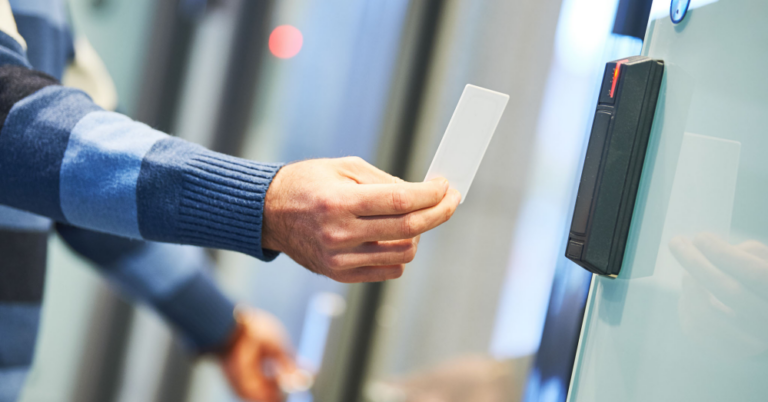As homeowner association (HOA) board members, you are always looking for ways to improve the security and convenience of your community. One area that has seen significant advancements in recent years is common area access control systems.
Gone are the days of traditional key-based systems, as new technology has emerged to enhance the security and ease of use of these systems. Two such innovations are RFID tags and cell phone proximity detection.
RFID (Radio Frequency Identification) tags are small chips that can be embedded in key fobs or cards that residents carry. When a resident approaches a controlled access point, such as a gate or door, they simply hold their tag near a reader, and the access point will unlock automatically. This eliminates the need for residents to fumble with keys or remember access codes, making entry and exit much quicker and more convenient.
In addition to RFID tags, some access control systems now offer cell phone proximity detection. This works by using Bluetooth Low Energy (BLE) technology to detect when a resident’s smartphone is in close proximity to an access point. The access point can then be programmed to automatically unlock when the resident’s phone is in range, eliminating the need for them to physically interact with the access point.
One advantage of cell phone proximity detection is that it eliminates the need for residents to carry a separate tag or fob. It also offers an added level of security, as residents can control access to their smartphone through a secure app, which allows them to easily revoke access if their phone is lost or stolen. Furthermore, cell phone proximity detection has the added benefit of homeowners being less likely to share their phone with non-residents, thus mitigating entry of unauthorized visitors.
Another benefit of these new access control systems is that they are highly customizable. HOAs can set different levels of access for different areas, such as restricted access to certain amenities for non-residents. They can also program access points to automatically lock and unlock at specific times, making it easier to manage the security of the community.
Finally, these new systems often come with robust reporting capabilities, which allow HOAs to track access to different areas, monitor usage patterns, and quickly respond to security incidents. This data can also be used to optimize the management of common areas, such as ensuring that amenities are being used to their full potential.
RFID tags and cell phone proximity detection are powerful tools for HOAs looking to enhance the security and convenience of their communities. These systems offer a higher level of customization, reporting capabilities, and security, making them an excellent option for HOAs looking to upgrade their access control systems. It is important to work with a trusted vendor when implementing these new access control systems to ensure that you are getting the best solution for your community. With the right system in place, you can enhance the security and convenience of your community and provide peace of mind for your residents.









